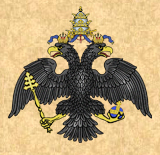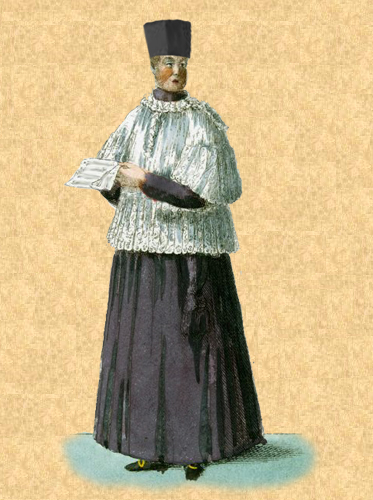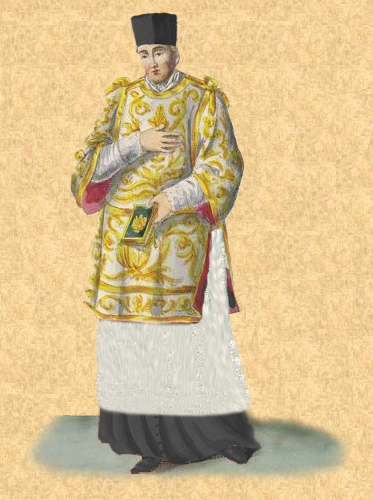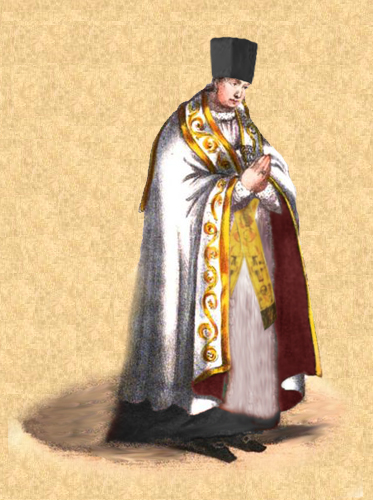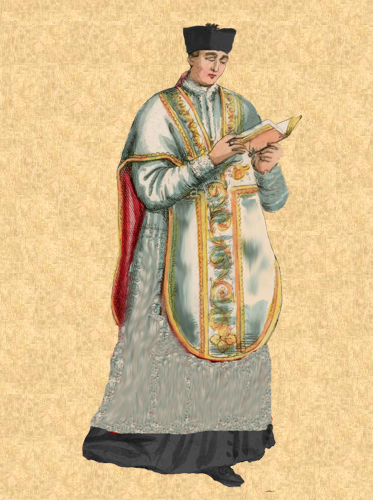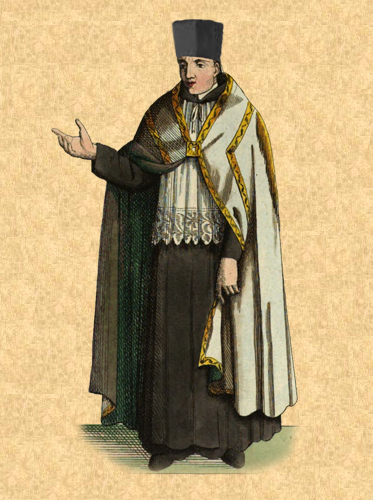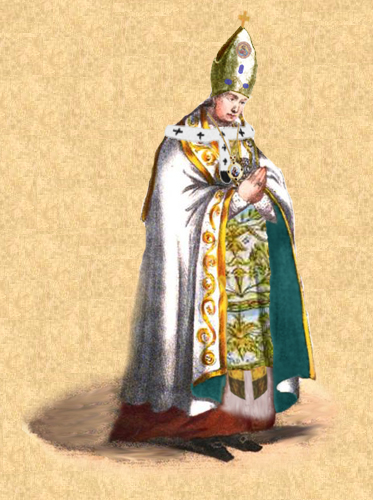|
Sacred Vesture The following are examples of some of the sacred vestments used at the liturgy within the United Roman-Ruthenian Church. Left: Cleric in cassock and surplice. Used by the Gallo-Russo-Byzantine, Anglo-Roman, and Gallo-Roman Rites. Right: Deacon, of the Gallo-Russo-Byzantine, Anglo-Roman, and Gallo-Roman Rites.
Left: Priest in vestments to serve as a Sacred Minister in the Divine Liturgy of the Gallo-Russo-Byzantine Rite. Right: Priest in vestments to serve as the Celebrant of either the Anglo-Roman or Gallo-Roman Rite.
Left: Priest of the Gallo-Russo-Byzantine Rite in vestments to serve at the altar (not as Sacred Minister) during the Divine Liturgy. Right: Archbishop of the Gallo-Russo-Byzantine Rite in liturgical dress. A bishop is identical without the pallium. All bishops use the gold omophore , fanon, and the pianeta (shaped like a dalmatic) under the cope. Bishops also under certain circumstances may use the simplex pontifical liturgical vestments, which does not use the fanon or pallium. [Liturgy]
|
